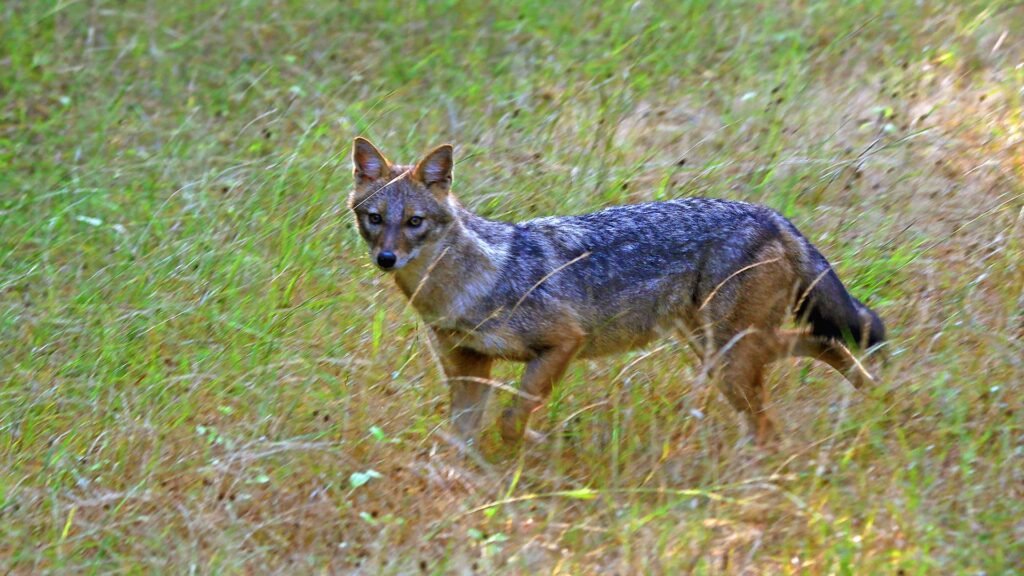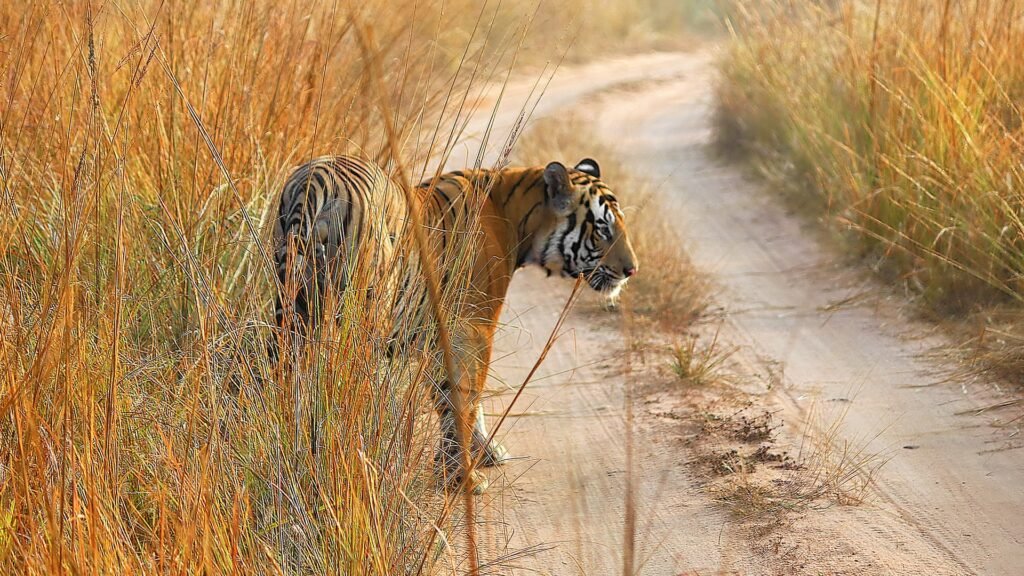WILDLIFE IN MAHARASHTRA
Maharashtra is the third largest state in India in terms of its area and is located in the western peninsular region, occupying a large portion of the Deccan Plateau. It is bordered by Karnataka and Goa in the south, Telangana in the southeast, Chhattisgarh in the east, Madhya Pradesh and Gujarat in the north, Dadra and Nagar Haveli and Daman and Diu in the northwest, and the Arabian Sea in the west.
Maharashtra is a very historically significant state, and currently, too, there are many major factors in that state that make it an excellent tourist spot, including its amazing biodiverse natural environment. The famed Ajanta and Ellora Caves are UNESCO World Heritage Sites and located in this state. The city of Pune is known as the ‘Oxford of the East’ because of the numerous educational institutions, and Nashik is the Wine Capital of India because it has the largest numbers of vineyards and wineries in the country. There are holy places, forts, historical ruins, monuments, and tombs that attract any tourist to explore their intricate beauty.
Maharashtra contains mountainous regions, a coastal line, and a plateau, which enables a very diverse variety of flora and fauna in the area. The major types of forests include semi-evergreen forests, moist and dry deciduous forest, thorn forests, littoral, and swamp forests that are home to more than 274 species of birds and 42 species of mammals.
The Deccan Plateau is separated by the Western Ghats from the Konkan coast and this allows different ecosystems to co-exist and thrive in the same state. There are about 11 Wildlife Sanctuaries, 6 Tiger Reserves, and 6 National Parks that are protected areas that govern the protection and conservation of wildlife and their natural habitat. The 6 National Parks are the Chandoli National Park, the Navegaon National Park, the Gugamal National Park, the Jawaharlal Nehru (Pench) National Park, the Sanjay Gandhi (Borivilli) National Park, and the Tadoba National Park. The cute Indian Giant Squirrel is the State Animal and the unique Yellow-footed Green Pigeon is the State Bird, whereas the State Flower is the Jarul and the State Tree is the Mango Tree, which is also India’s National Fruit.
Maharashtra has different biological ecosystems coexisting with each other in harmony, and it presents an opportunity to view and experience their natural beauty all at once. Now that is something that no one would want to miss.
Major Wildlife Destinations
Gugamal National Park
Navegaon-Nagzira National Park
Pench (Jawaharlal Nehru) National Park & Tiger Reserve
Sanjay Gandhi National Park
Tadoba National Park & Tiger Reserve
| Sr. No. | National Park | Year of Establishment | Area (km2) |
| 1 | Chandoli | 2004 | 317.67 |
| 2 | Gugamal | 1975 | 361.28 |
| 3 | Nawegaon | 1975 | 133.88 |
| 4 | Pench (Jawaharlal Nehru) | 1975 | 257.26 |
| 5 | Sanjay Gandhi (Borivilli) | 1983 | 86.96 |
| 6 | Tadoba | 1955 | 116.55 |
Source: National Wildlife Database, Wildlife Institute of India
| Sr. No. | Wildlife Sanctuary/ Protected Area | Year of Establishment | Area (km2) |
| 1 | Amba Barwa | 1997 | 127.11 |
| 2 | Andhari | 1986 | 509.27 |
| 3 | Aner Dam | 1986 | 82.94 |
| 4 | Bhamragarh | 1997 | 104.38 |
| 5 | Bhimashankar | 1985 | 130.78 |
| 6 | Bor | 1970 | 61.1 |
| 7 | Chaprala | 1986 | 134.78 |
| 8 | Deulgaon-Rehekuri | 1980 | 2.17 |
| 9 | Dhyanganga | 1997 | 205.23 |
| 10 | New Maldhok Bird (Gangewadi) | 2012 | 1.98 |
| 11 | Gautala-Autramghat | 1986 | 260.61 |
| 12 | Ghodazari | 2018 | 159 |
| 13 | Great Indian Bustard | 1979 | 366.73 |
| 14 | Isapur | 2014 | 37.803 |
| 15 | Jaikwadi | 1986 | 341.05 |
| 16 | Kalsubai Harishchandragad | 1986 | 361.71 |
| 17 | Karnala Fort | 1968 | 4.48 |
| 18 | Karanja Sohal Blackbuck | 2000 | 18.32 |
| 19 | Katepurna | 1988 | 73.63 |
| 20 | Koka | 2013 | 100.138 |
| 21 | Koyana | 1985 | 423.55 |
| 22 | Lonar | 2000 | 1.17 |
| 23 | Malvan Marine | 1987 | 29.122 |
| 24 | Mansingdeo | 2010 | 182.59 |
| 25 | Mayureswar Supe | 1997 | 5.15 |
| 26 | Melghat | 1985 | 778.75 |
| 27 | Nagzira | 1970 | 152.81 |
| 28 | Naigaon Peacock | 1994 | 29.89 |
| 29 | Nandur Madhameshwar | 1986 | 100.12 |
| 30 | Narnala Bird | 1997 | 12.35 |
| 31 | Nawegaon | 2012 | 122.76 |
| 32 | New Bor | 2012 | 60.7 |
| 33 | New Nagzira | 2012 | 151.33 |
| 34 | Painganga | 1986 | 324.62 |
| 35 | Phansad | 1986 | 69.79 |
| 36 | Pranhita | 2014 | 420.06 |
| 37 | Radhanagari | 1958 | 351.16 |
| 38 | Sagareshwar | 1985 | 10.87 |
| 39 | Sudhagad | 2014 | 77.128 |
| 40 | Tamhini | 2013 | 49.62 |
| 41 | Tansa | 1970 | 304.81 |
| 42 | Thane Creek Flamingo | 2015 | 16.91 |
| 43 | Tipeshwar | 1997 | 148.63 |
| 44 | Tungareshwar | 2003 | 85 |
| 47 | Umred-Kharngla | 2012 | 189.3 |
| 48 | Wan | 1997 | 211 |
| 45 | Yawal | 1969 | 177.52 |
| 46 | Yedsi Ramlin Ghat | 1997 | 22.38 |
Source: National Wildlife Database, Wildlife Institute of India
| Sr. No. | Conservation Reserve/ Protected Area | Year of Establishment | Area (km2) |
| 1 | Anjneri | 2017 | 5.69 |
| 2 | Bhorkada | 2008 | 3.49 |
| 3 | Kolamarka | 2013 | 180.72 |
| 4 | Mamdapur | 2014 | 54.46 |
| 5 | Muktai Bhavani | 2014 | 122.74 |
| 6 | Toranmal | 2016 | 93.42 |
Source: National Wildlife Database, Wildlife Institute of India



